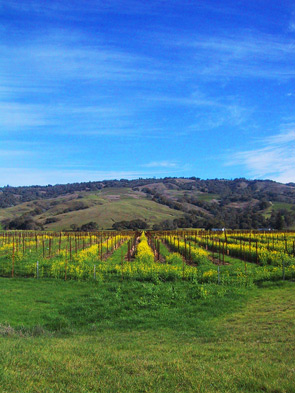aboutLeaving the high technology industry in 1998, Julia went to work as a sales and events manager at a high-profile corporate caterer. Convinced that learning the business from the ground up was the only way to achieve her goals, she set out to learn all facets of the catering business during her two year tenure. At the same time, a love of her grandmother’s traditional recipes ignited a passion for Italy, further enhanced by a gift of the book “Under the Tuscan Sun.” One day, reading a magazine, she noticed a farm cooking school in Italy, and a dream was born. The owner of the catering company, looking for the perfect sales incentive, offered Julia the opportunity to attend the school, and in 2001, the dream became a reality as she boarded the plane for Italy. In Tuscany, Julia was at last in her element. The challenges of the language did nothing to dissuade her from immersing herself in the cuisine and the culture. The relationship between farms and food that she began to observe in California was a way of life in Tuscany. It was here that she was introduced to Slow Food, the international movement that seeks to preserve traditional food ways and the culture that surrounds them. Surrounded by people who’s every conversation was grounded in food and wine, Julia’s resolve to share this joy with others was strengthened. Upon returning home, she decided that when she and her husband relocated to Mendocino County, she would launch a business with the mission to bring this joy of food and culture to others. Today, Assaggiare Mendocino personifies this esthetic. Under its masthead, Julia combines culinary advocacy, education, production and evangelism. As the local leader for Slow Food in Mendocino County, she is involved in a multitude of activities ranging from advocating a green meat processing facility for local farmers and ranchers to working with a group to address water resource needs and practices in the county. She is also a principal in an artisanal olive oil company, Stella Cadente, also based in Mendocino County. “The foundation of the ancient food world is based on several key agricultural products, bread, cheese, wine and olive oil,” says Conway. “I have managed to study, work with, and eventually take part in the production of all of these foods in some way or another.” With one foot in the past, and one foot in the future, Julia is working to reintroduce wholesome food into the lives of busy Californians. One of Julia’s favorite indulgences is local and seasonal foods. One of the tenets of Italian cooking and eating is to take the freshest local ingredients and prepare them in such a way as to amplify their goodness. Unlike many aspects of modern gourmet cookery, it is not about how you can transform the ingredient, but how you can bring out the best and most flavorful attributes. An avid gardener, Julia grows heirloom Mediterranean and American vegetables, and often incorporates wild foraged ingredients in her menus as well. “The local Pomo Indians here in Mendocino County had such a diverse and plentiful food supply, it allowed them the luxury of developing a tradition of weaving intricate and beautiful baskets rather than having to focus on subsistence alone.” The woods surrounding her kitchen provide wild huckleberries, blackberries and boysenberries, as well as porcini, chanterelles and other wild mushrooms. “There is nothing I saw in Tuscany that could not be duplicated here in Northern California,” she notes. “Visiting and cooking in Italy gave me a new respect for the abundance of my own home region and a renewed passion for sharing it.” The sea yields wild salmon, Dungeness crab, rockfish, mussels, and even abalone. Heritage Gravenstein apples, wine grapes, pears, and even olives and figs grow in the rich soils of the coastal and inland valleys. Farm fresh eggs can be had from the farmers market in summer and the local feed store in the winter months. Several farms and ranches provide free range chicken and ducks, as well as grass fed goat, lamb and beef and pigs fattened on vegetable trimmings from local restaurants. All of these marvelous ingredients find their way into her kitchen, where they are transformed into the love and nurture found at the old world table. Recently, when catering a Harvest Dinner at Handley Cellars in the nearby Anderson Valley, Julia sourced almost all of the ingredients from a radius of 150 miles surrounding the winery, with much of it from their own garden. Guests were given the opportunity to prepare a cordial out of wild foraged berries steeped in local red wine, take the berries and combine with apples picked from the winery’s orchard to make fruit gallettes for their dessert. Another station offered them the chance to make fresh buffalo mozzarella from curd and pair it with heirloom tomatoes and basil still warm from the garden and Stella Cadente olive oil. Up in the garden itself, guests could talk with the master gardener, and prepare crostini toppings from beans and greens grown and picked on site. Another table offered an artisan salt tasting from around the world as well as locally harvested sea salt. At the end of the afternoon, all of the wonderful pieces were assembled into a feast, and served with Handley’s award winning wines. |
 |

